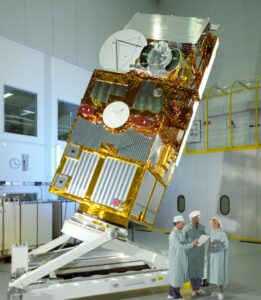Latest News

The ERS-2 satellite in the clean room before its launch. Photo: ESA
After a 16-year working life, the second European Remote Sensing Satellite (ERS-2) is making its final descent into Earth’s atmosphere. ERS-2 returned information that influenced the perception of climate change and the understanding of the planet.
The European Space Agency (ESA) retired ERS-2 in 2011. It was originally launch in 1995. The Space Debris Office has been closely following the satellite’s 13 year orbital decay and will monitor ERS-2 natural reentry into earth’s atmosphere. This is expected to happen around mid-February.
ERS-2 launched in 1995 four years after its sister satellite ERS-1. Both satellites carried an imaging synthetic aperture radar, a radar altimeter, sensors to measure ocean-surface temperature and winds at sea and other impressive instruments. ERS-2 had an additional sensor to measure atmospheric ozone.
The ESA satellites collected significant data on Earth’s diminishing polar ice, changing land surfaces, sea-level rise, warming oceans, atmospheric chemistry and also monitored natural disasters. With this information scientists were able to begin to understand human impact on the planet.
Technologies pioneered on ERS-2 paved the way for several successor ESA missions such as the Envisat mission, the MetOp weather satellites, the Earth Explorer scientific research missions and the Copernicus Sentinels.
Get the latest Via Satellite news!
Subscribe Now